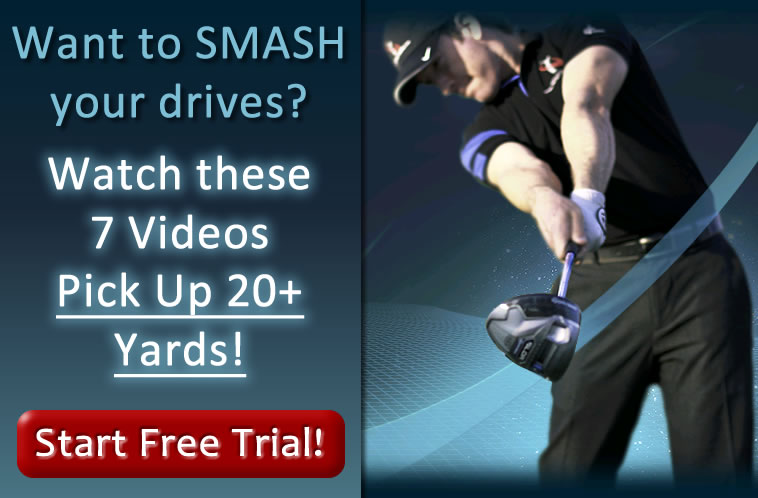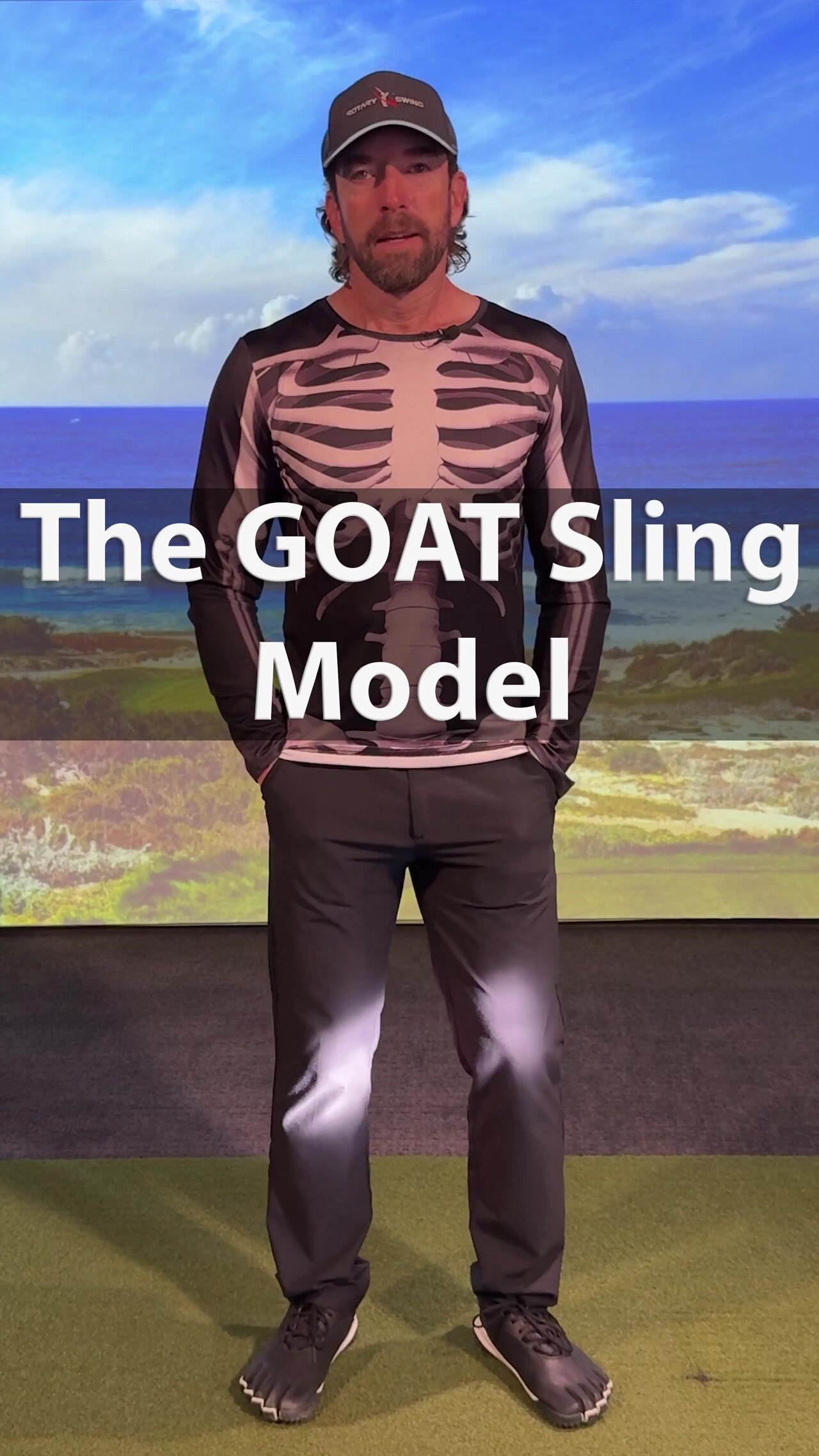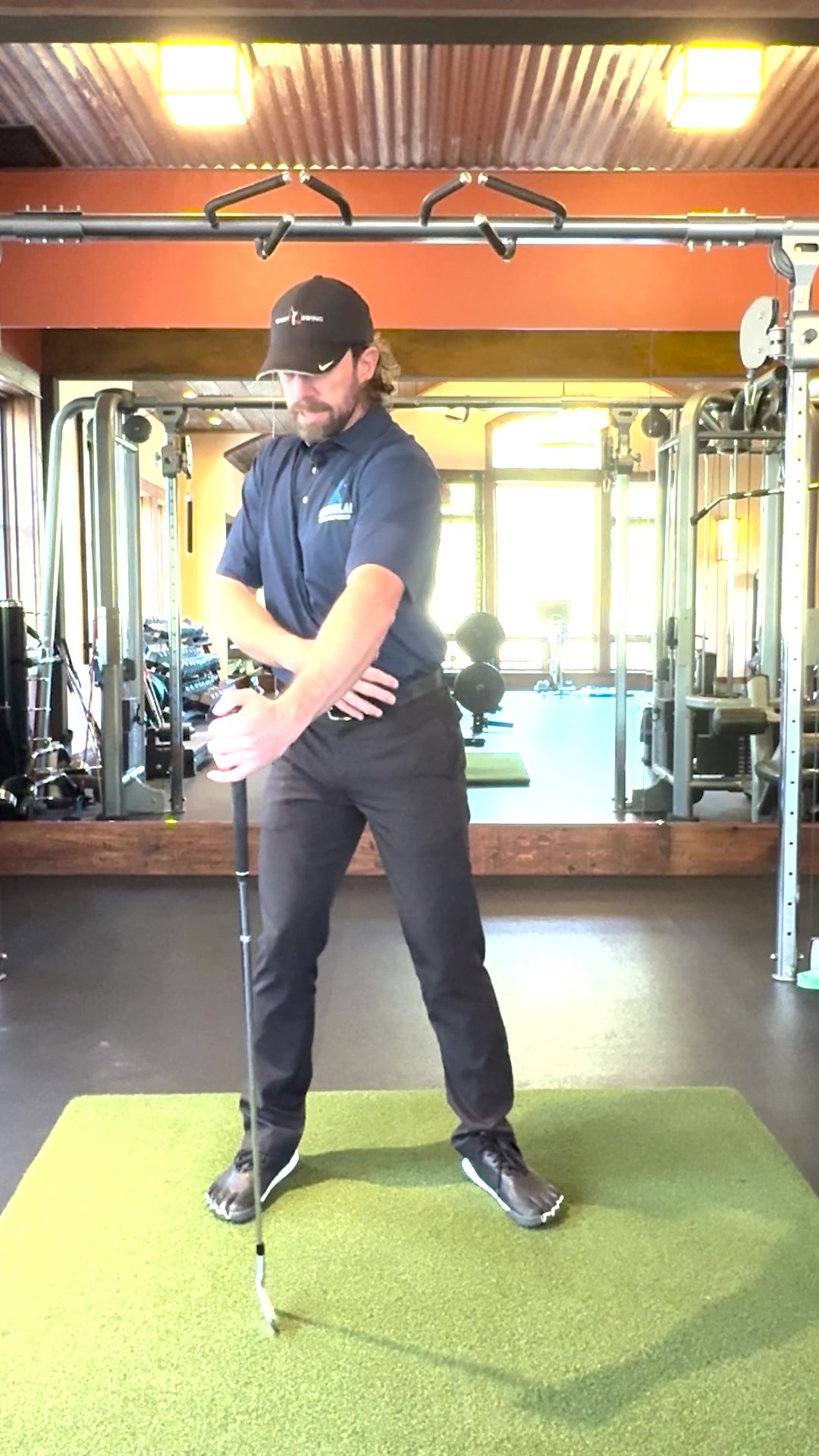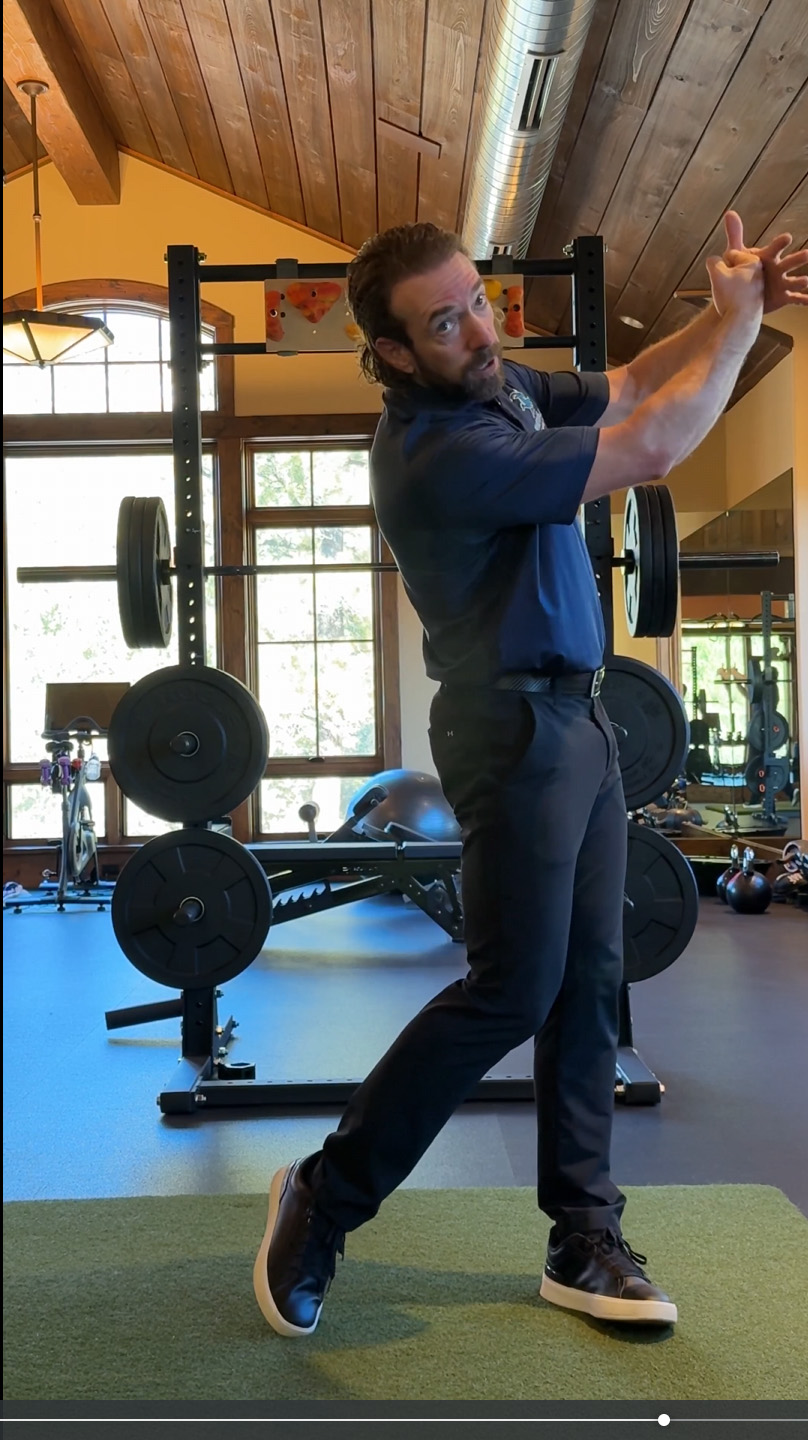It's finally time for us to discuss spin and how it relates to bombing your driver. Spin is one of the most important aspects of getting a properly fit driver and getting the maximum distance out of your swing.
We'll also go into the nuts and bolts of some of the factors that affect spin.
In the last lesson we looked at launch angle, which has a dramatic impact not only on the overall distance of the ball flight, but also on the look of the shot when it's in the air.
Spin also affects how the ball flies through the air, how it looks to your eye, and how far it goes. It's an extremely important factor and the topic of this lesson.

We use software to simulate the golf swing and analyze the effect of each factor
What Creates Spin?
Spin changes drastically depending on where the ball strikes the club face. For instance, if you hit the ball extremely low on the face the vertical gear effect creates more backspin and a much lower launch angle than if you hit it higher on the face.
This is detrimental for several reasons.
Think back to the Ball Speed lesson, when we marked the ball with a dry erase marker to find out where it was hitting the club face. We started with that lesson because where the ball strikes the club face affects distance more than anything else.
In the next lesson we talked about the "roll" or curvature built into club face.
Say you buy a 9.5° driver off the shelf. Assuming it's in spec to begin with, which they're usually not, if you take a loft/lie gauge and measure the bottom of the face you may find that it only has 7° of loft at that point.
If you're swinging that club head in the 95 mile an hour range and you hit it low on the face, you're only getting 7° of loft at impact, coupled with a tremendous amount of spin. Those two factors together are going to cost you a lot of distance.

Sample Swings - Red
Let's look at some specific scenarios. The graph below shows a simulation of three similar swings. We'll start with the red one at the bottom.
This line represents a swing with a dynamic loft of 10.5°. That doesn't necessarily mean that the driver says 10.5° on the heel.
The club may say 9.5° but actually measure out to 10.5°. The way the shaft flexes forward at impact can also affect the launch angle. For our example we'll assume that, whatever the factors, the net effect is 10.5° for this particular club.
We're swinging at 95 miles an hour, and we'll assume we're hitting the ball solidly in the center of the face and getting a good power transfer ratio.

Simulation software shows us a graph of several sample shots
Why So Low?
If we have 10.5° of dynamic loft on the club and we got a good, solid shot, why did it fly so low?
The bad news is, we came into impact with an angle of attack of -2°. We're hitting down on the ball with this driver as if it were an iron shot. A lot of golfers have been taught to do exactly this, but for the average golfer it's terrible advice.
Hitting down on the ball will cost you massive, massive distance. Even with a negative angle of attack of just 2° - which isn't even all that sharp - the ball is only going to launch at 7°.
When you're swinging at 95 mph and your launch angle is that low, the ball is just not going to go very far. We can see on the graph that the red shot only carried about 200 yards, and that's if we hit it absolutely flush.
Of course, we're all imperfect and we don't hit the ball flush every time so it's not even going to go that far. This angle of attack, this club head speed and this ball speed don't create enough spin to keep the ball in the air long enough to go anywhere.
The driver is a distance club. It's designed to be hit as long as you can. It's the only club in the bag without a distance or a speed limit on it.
Review the launch angle lesson and work on getting a higher launch with the driver. The driver has become more and more of a specialty club and you need to learn how to maximize it.
Sample Swings - Yellow
Let's see what happens when we change some of the factors on that swing.
On the yellow shot we've changed the angle of attack to positive 2.5°. That's catching the ball slightly on the upswing. It gives a little more dynamic loft, which will increase the spin a little bit.
With a little more forward kick in the shaft, we get a launch angle of 13° with a similar ball speed. Our carry distance goes from 199.7 to 222.7. Ball speed and club head speed have remained the same.
If we back the dynamic loft down as well we can get a direct comparison. The yellow swing now carries 220.4 yards, and all we did was change is the launch angle.
With just a little bit of swing instruction such as the Launch Angle lesson, we've picked up 20 yards of carry. (We'll calculate the roll on these shots in a few minutes.)

Red and yellow swings: The difference is the angle of attack
Just a couple of simple tweaks and we've got 20 yards right off the bat.
If you've been hitting down on the ball, this is the change you can expect from moving the ball up in your stance, getting a little bit of axis tilt away from the target at impact, teeing it high, and catching it high on the face.
It's a huge difference and we haven't even changed the club itself. This is assuming that your club is already fit optimally for you, which it's probably not.
Sample Swings - Blue
Now let's move on to the blue line. Let's say we switch clubs. Instead of 9.5° or 10.5°, let's say we're using a 13° driver. We're still going to catch it on the upswing at about 2.5° or so but we're going to add a lot of loft here.

Changing blue's driver
What we'll start to see is that there is actually a point of diminishing returns at our club head speed of 95 mph. There comes a point where actually don't want so much loft.
Now, if you swing slower than this you would never ever, ever want anything less than 10.5°-11° of loft (unless you hit down on the ball very sharply - and of course that's what we're trying to get you to stop doing). You want more loft, and you want to hit it higher on the face so you get more dynamic loft.
At some point, though, if you're swinging at 95 mph you will eventually see the numbers start to fall a little bit. Now we've actually got too much loft and too much spin.

Too much loft
This is where the ball starts to balloon. It's climbing straight up in the air and we get a point where we there's too much loft, creating too much backspin, and the ball isn't going to go anywhere.
If we keep modifying these numbers we can find the optimal point - the point of maximum carry. In this example, that's at about 222.8 yards. When we stop it there and check the loft we see it's about 11.5°.
This shows us that if you're swinging 95 miles an hour with an 8.5° driver you want to add a ton of loft, so unless you're playing that ball way up in your stance and hitting it super high on the face, you're costing yourself a ton of potential yardage.

Blue's maximum carry
Let's Check the Numbers
Now we'll go in and have a look at some of the stats for these shots.
The shot labeled A in the chart below is our blue shot, the optimal flight.
We have a launch angle of 12.5°, so again we're catching it on the upswing for an attack angle of about 2.5°, which gives us a reasonable spin rate. The ball is going to carry about 223 yards - the exact yardage will vary slightly depending which software simulation you use - and at the bottom of the chart we see that we're going to get about 21 yards of roll.

Shot analysis
Shot B is the red one, where we hit down by a couple of degrees. That shot launched very low, got lower spin because there was less dynamic loft at impact, and now we're only getting 200 yards of carry. We do pick up a couple yards of roll, but two yards of roll obviously doesn't make up for losing 22 yards of carry.
Shot C shows what happens if we catch the ball severely on the upswing. Now we've told the software that we're going to launch the ball extremely high. We've teed it super high, it's way up in our stance. We're going to catch it high on the face and 5-6° on the upswing instead of 2°. That's going to give us a low spin rate.
Now we can start to get a lot of distance. This shot gets 232 yards of carry and 22 yards of roll on a typical PGA Tour-cut fairway. That's optimal. At this swing speed, the higher we can launch the ball the better because the ball will stay in the air longer. Launch it higher for more carry distance and more roll.

Additional Factors
We've made a number of assumptions for each of these swings.
We've assumed that we hit the ball very solidly in the center of the club face for maximum ball speed. We've assumed that we have a decent driver head that has max COR and a good center of gravity, and that it's all built up perfectly and doesn't cost you ball speed.

Missing the sweet spot
What happens if these things aren't true? What if we hit low on the face?
Let's take a look at shot D. When you hit the ball low on the face you lose a tremendous amount of ball speed. This software is showing a loss of about 13 miles an hour, which is pretty typical of what happens when you don't catch the sweet spot.
Of course, lower ball speed is only part of it. Now you're also launching it low because there's not enough loft on that part of the club face to get any distance. To make matters worse, hitting it low gives us a lot of backspin, which also costs us a lot of distance.
Just missing the sweet spot - hitting low by 1/2" to 3/4" of an inch - you've gone from hitting a potential of 232 yards of carry to just 176. Now you can start to see all the things that go on when you don't catch one flush.
Graphing it Out
Why are you losing that distance? Why aren't you getting optimal distance for your club head speed? We can start to see in the graph.
The graph below shows those same shots. The top one is, obviously, the one we launched the highest. You can see that it maxes out, carrying farther and getting more overall distance. The lowest one is where we missed the sweet spot and lost a lot of ball speed and distance.

Graph
Total Distances
The bar chart below shows the total distance for each shot. The blue portion of each line is the carry, and the green portion is roll.
The one that launched the highest is C on this chart. That's the 15.6° launch angle, and it gets a total distance of 254.6 yards, between carry and roll.
If we don't hit that shot solidly, it ends up looking more like the last line on the chart - shot D. That's where we hit too low on the face, causing too much spin and a low launch angle. You're not going to get the ball over the 200 yard mark doing that.
The good news is that with that exact same golf swing - the exact same speed, the exact same everything - you have the potential to hit it almost 60 yards farther, just by changing your setup and catching the ball more on the upswing.

Total distances chart
And 60 yards is a dramatic difference. You're talking about going from playing the up tees and hitting a 3 wood or a 2 iron hybrid into a green, versus hitting an 8 or 9 iron into the green.
It's a massive difference, and that's why it's so important that you start to gain an understanding of spin rates and launch angles, hitting the ball solidly and all these things we've been discussing in the Bomb Your Driver series.
Check All the Factors
Getting a club that feels comfortable in your hands - that you can swing properly and that doesn't require you to do a lot of work to get the proper launch numbers - will allow you to achieve more consistent drives.
That's why driver fitting is so important. There's a lot to be gained or lost!
Even if you have a driver setting that's pretty solid and you consistently hit solid shots, if you hit down on the ball and launch it too low, that's ball flight B. That's 30 yards short of your optimal shot.
Catch that ball more on the upswing and you can pick up 30 yards. Again, we're talking three clubs into the green. You go from hitting a 6 iron to a pitching wedge, or a 6 iron to a 9 iron. It's going to change the way you play the game. It's going to change your ability to score.
Really look into these numbers. Start to understand what they mean and the effect they have.
If you've never gotten on a launch monitor before, you must. You absolutely must if you love the game and you're serious about playing and maxing out your distance. You've seen golfers on the website who are picking up an average of 20 yards. Some of them are picking up 30, 40, 50, 60 yards, just from doing a fitting with Chuck. That could be you.
It's all just a result of maximizing the numbers, using physics and science to get the right numbers, the right ball, the right club, the right shaft to get you into this optimal range.
You can be the one out-driving everybody in your group, just by changing some simple things in your swing and your setup, and getting the right club in your hand. You'll start bombing your driver too.
Watch part 2 now to see how you're moving your body in the opposite direction of the pros!










































































































































































































 We use software to simulate the golf swing and analyze the effect of each factor
We use software to simulate the golf swing and analyze the effect of each factor
 Simulation software shows us a graph of several sample shots
Simulation software shows us a graph of several sample shots Red and yellow swings: The difference is the angle of attack
Red and yellow swings: The difference is the angle of attack Changing blue's driver
Changing blue's driver Too much loft
Too much loft Blue's maximum carry
Blue's maximum carry Shot analysis
Shot analysis Missing the sweet spot
Missing the sweet spot Graph
Graph Total distances chart
Total distances chart
